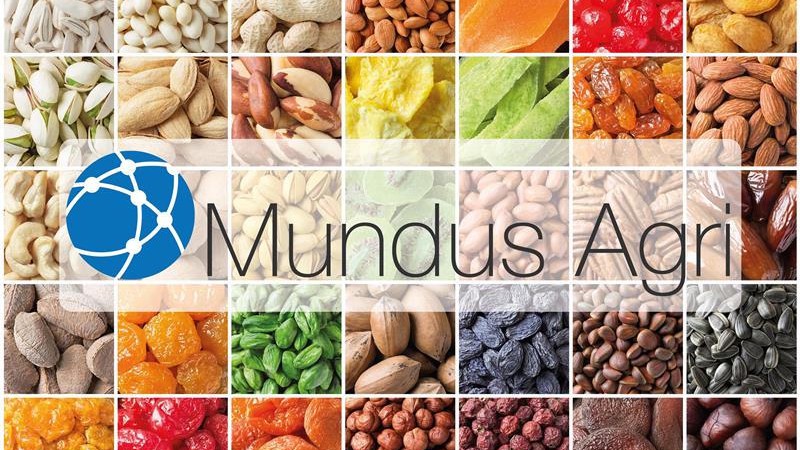Soybeans: EU drastically cuts back on US imports
July 14, 2020 at 12:58 PM ,
Der AUDITOR

Europe placed at a disadvantage
Legal expert Darius Schindler has heavily criticised the agreement signed by the US and China on 15 January. While the US has waived additional tariffs on Chinese imports China has agreed to buy additional US products worth USD 200 billion in 2020-2021. This, in other words, is a Soviet-style managed trade which comprises soybeans. Problem, however, is that “the purchasing list in the agricultural sector can only be primarily achieved through subsidies for US imports. This is a factor that must be taken into account by European players, as it distorts the market.” Schindler adds that “China's purchasing commitments are also conceptually at odds with the WTO's principle of free and rule-based trade and are conducted at the expense of third-party countries, including the EU.”
Although this distortion of trade may render such agreements illegal, it can be argued that practical market dynamics overrule any potential disadvantages for transatlantic trading partners. The US does in fact have very close ties with Europe. As U.S. Soybean Export Council CEO Jim Sutter has recently stressed the “European Union (EU) and Middle East/North Africa (MENA) regions are very important to U.S. Soy”. In 2018/2019, the “EU and MENA markets accounted for 13.2 million tons or 22% of U.S. Soy exports”. Sutter adds that “Southern Europe is very important in soybean crushing in Europe as Spain, Portugal, and Italy represent 50% of the total EU soy crush. In the last two years, Spain and Portugal have considerably increased imports of U.S. soybeans“. Transatlantic relations have, nevertheless, soured since US president Donald Trump took office in 2017. This has also impacted US-EU soybean trading activities.
EU-US agreement fails to boost US soybean sales
With all the media attention the China-US agreement is receiving, it is easy to overlook that the EU and the US also reached an agreement one year earlier. Strikingly, a conflict over tariffs also prompted this deal. Former EU Commission president Jean-Claude Junker and Trump agreed to avoid a tariff war on industrial goods such as cars, which would have been disastrous for European car manufacturers. In return, the EU approved the use of US soybeans in biofuel production in January 2019, a move designed to boost US soybean sales. Sutter explains that hopes are high since by “2020, EU Member States are required to fulfil at least 20% of their total energy needs with renewable sources, with at least 10% attributed directly to transport fuels. U.S. farmers are positioned to meet those needs through programs like SSAP RED (Soy Sustainability Assurance Protocol Renewable Energy Directive)”. Although US sales to the EU did receive a boost in 2018/2019, this is rather attributed to market dynamics, which have taken centre stage in 2019/2020.
Pandemic overrules any boost to US sales in 2019/2020
As recently issued European Commission data shows, Brazil has replaced the US as main soybean supplier. At 15,05 million tonnes, total EU soybean imports for 2019/2020 are 1% down on 2018/2019. Brazil holds a 45.2% market share and features as the most important supplier. Although the US was the main supplier in 2018/2019, EU imports soybeans imports from the US took a marked year-on-year dive in December (-66% to 389,756 mt). Although US imports to the EU recovered to 753,748 metric tonnes in January, the outbreak of the coronavirus prompted a 62% decline in March to 288,618 metric tonnes. Sutter admits that this “public health issue does add to global uncertainty”. He is, however, highly optimistic that US soybean farmers are resilient and will continue to produce a “plentiful supply for global customers” and that the trade ties with Europe will prove equally strong “with a relationship spanning 50 years”.
Disappointing kick-off to 2020/2021
The kick-off to the new season is, however, anything but promising for US-EU trade relations. Although US export prices ranged lower (EUR 321/t, USD 362/t FOB US Gulf) than in Brazil (EUR 328/t, USD 370/t FOB Paranagua) at the start of July as IGC data shows, recently issued EU Commission data shows that the US only ranks fifth in terms of EU soybean imports. EU soybean imports are 19% down on last year at 0.53 million mt at the onset of 2020/2021. Brazil holds a market share of 89.6% with an import volume of 476,304 mt, followed by Argentina (31,.833 mt) and Ukraine (9,129 mt). Next in line is Serbia (8,436 mt), followed by the US with imports ranging as low as 2,164 metric tonnes and a market share of 0.4%. Much will depend on market dynamics, the further development sin the coronavirus crisis and prices for the US to compete. Market players in the EU are also closely following the run up to the US presidential elections. As US farmer Rick Bieber states many feel that Trump's "ego has got in the way" in shaping trade relations with the US.
View more information
- price chart, soybeans, CBOT
- price chart, soybean oil, CBOT
- price chart, soybeans, Manitoba
- more price charts





